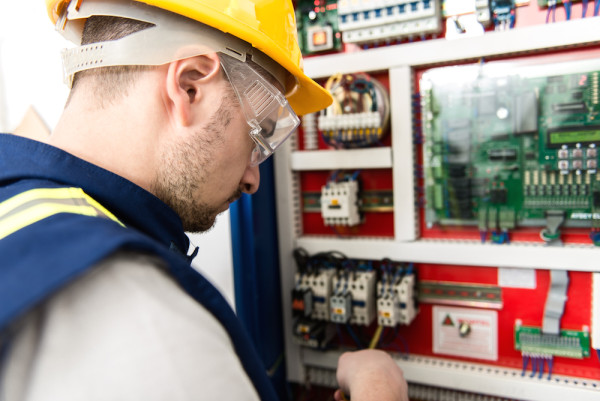Edition 5.0 of IEC 60079.14, the text that governs our working lives here at Extend Training, was published by the IEC almost two years ago now. The committee process to adopt the IEC text as an AS/NZS standard typically takes around that long, so it’s quite likely that there will be a new AS/NZS 60079.14 published in the not-too-distant future. So with change (possibly) in the wings, we thought we’d have a closer look over the IEC Edition 5.0 text to see what’s new, where the new AS/NZS version might be heading as a result. There are of course many changes from Ed 4.0, but the four below struck us as some of the bigger ones – with some prickly issues for the AS/NZS committee to work through.
1. The biggest change is the structure of the document – lots of the requirements are the same as in the previous version, but you’ll find them in different places in the re-organised text.
2. The requirements for compound glands in Ex d equipment have changed, and a test for cables can now be found in Annex E (some people are unhappy about this one).
3. Intrinsically safe installations will now require certified cable glands, and in many cases terminal boxes will also need to be certified.
4. The requirements for cable glands generally have been expanded and made more prescriptive.
Read on below for a more detailed analysis of these changes and their potential implications. We should stress of course that these are only our opinions – others may disagree entirely, and the great thing about the adoption committee process is that it provides a platform for differing views to be heard and debated, with the final document hopefully reflecting a consensus that everyone can live with. It will be interesting to see the outcome this time around.
1. Edition 5.0 has been extensively re-organised.
The biggest apparent change is in the layout of document itself, rather than the content. The structure has been extensively revised. There are new sections devoted to cable entry systems, rotating machines, luminaires and electric heating systems. But, most of the requirements in these sections are not new –they were previously contained in the sections on the individual protection types. Now, instead of having a clause in each protection type’s section that relates to cable entries, there is a whole section on cable entries that contains clauses on the requirements for each protection type. Same pattern for rotating machines, lights and so-on. Overall the new structure works fine, but it takes some getting used to – it will be fun watching the clause-quoters on our staff (you know who you are!) as they struggle with remembering a whole new set of numbers when the new version arrives!
2. There is a cable test to (maybe) determine if barrier glands are required on Ex d equipment.
The new edition has made an attempt to resolve the perennial issue of compound barrier glands on Ex d equipment – how to be sure beyond doubt that cables are effectively filled such that flame propagation will still be prevented, even if barrier glands are not used. Interpretations of “effectively filled” vary considerably, so we often install barrier glands just to be on the safe side (and to avoid arguments about cables). We are certainly happy that an attempt has been made to clear up an area that is the subject of endless debate, but unfortunately the IEC’s published wording leaves quite a lot to be desired in terms of clarity.
Annex E now describes a “Restricted breathing test for cables,” which involves timing the pressure drop in a sealed, pressurised enclosure that has a 3 metre long sample of the cable in question terminated into it. The title of the test seems to relate to Ex nR equipment, but Annex E is referred to in the section on Ex d cable entries (and not in the Ex nR section!), which suggests that it is actually intended to be used in evaluating cables for flame propagation properties in Ex d installations. The intent seems to be that if cables pass the Annex E test, and are longer than 3 metres, barrier glands are not required for Ex d entries. Short cables, or cables not passing the test, still require a barrier gland. The Ex d gland selection flow-chart found in the current AS/NZS version is gone, which is definitely a win for simplicity, but the new requirements are not perfectly clear as currently written – the references to Annex E are in notes rather than in the main clauses, and there is no explicit statement that cables passing the test are “filled” and do not require a barrier gland for safety. And to further muddy the waters, the EEMUA in the UK has published a position paper on the subject, stating its opinion that the removal of the flow-chart is deficient and potentially dangerous, as there is no longer any consideration of the enclosure volume in determining if a barrier gland is needed. The EEMUA’s research apparently suggests that there is a correlation between large Ex d enclosures and cable damage, so its opinion is that barrier glands should still be used for enclosures larger than 2 L in volume in zone 1, as in the previous edition. There is no mention of the Annex E cable test at all in the EEMUA’s paper, which you can read here: http://tinyurl.com/zadw6wm
It’s worth noting that the latest edition of the standard for offshore hazardous area installations – IEC 61892.7 Ed 3.0, has clarified this issue completely by simply requiring barrier glands on all Ex d cable entries. This might be a conservative approach, but it is definitely clear, and should provide maximum safety as long as glands are correctly installed, so we think it will be an option under consideration. It will be very interesting to see which way the Australian committee goes on this thorny issue – watch this space!
3. New requirements for certified cable glands and terminal boxes in intrinsically safe circuits.
Terminals are considered simple devices in intrinsically safe circuits. And we’ve historically regarded terminal boxes as being the same – they provide basic ingress protection, but the safety of an energy limited circuit doesn’t rely on IP rating or mechanical strength, so there’s no need for them to be certified (same for cable glands in IS installations). Edition 5.0 is tightening up on things a little here and requires terminal boxes containing multiple IS circuits to meet the basic requirements of IEC 60079.0 (impact resistance, UV resistance, thermal endurance etc). Since it would be difficult to prove this otherwise, it appears that such enclosures must now be certified. Cable glands must also now be certified (more detail on this one in the next point). Our guess is that the measures are intended to prevent accidental cross connection of IS circuits as a result of damage to the terminal box (water ingress etc). We can’t help but think this might be getting a little carried away, but there could be a genuine reason that somebody much smarter than us has identified – concerns about static charge build-up on the surface of the JB for example, which may be valid. There are also some extra requirements for labelling of boxes containing IS and non-IS circuits that we think are sensible. Overall the impact of these changes is not likely to be large – use of certified glands and JBs in IS circuits is already very common, and there is an argument that safety is improved, so we think this one will probably get up in the AS/NZS version.
4. The requirements for cable glands are more detailed and prescriptive.
Table 10 in Ed 5.0 sets out the requirements for selection of protection type of cable glands, adapters and plugs according to the enclosure type of protection. It bears more than a passing resemblance to Table 8 in AS/NZS 60079.14:2009, so it seems that Australia may have made a contribution to the development of Ed 5.0 of the IEC text. IEC 60079.14 Ed 4.0 had some vague words about cable glands being “suitable for the application” and “preserving the integrity of the enclosure,” but not much in the way of concrete guidance as to what that actually meant. The AS/NZS version addressed this by adding in a sensible, easy-to-use table that has now been incorporated into the IEC text, but unfortunately there are some changes that we’re not crazy about.
The new IEC edition requires certified glands (Ex d, Ex e or Ex n) for Ex i circuits in gas/vapour locations, and Ex t glands for Ex i circuits in combustible dust areas. Apart from the issue of whether certified glands are necessary at all for safe Ex i installations (we think not, and the current AS/NZS standard agrees), stipulating Ex t for dust areas seems inconsistent and overly restrictive when the standard allows Ex i equipment certified for gas/vapour locations to be used in dust areas. The distinction between gas/vapour and dust cable glands is repeated for Ex p and Ex t, which is also unnecessary in our view, since the equipment requirements for Ex e, Ex n and Ex t cable glands are basically identical. The practical impact on installations is minimal – most glands have multiple certifications – Ex d, Ex e and Ex t usually, so they can be used anywhere, even with the new Table 10, but we object to overcomplicating things, especially when the complexity seems to introduce some inconsistency. We think the current AS/NZS version is a whole lot simpler with no compromise on safety, so we’re hoping the committee holds the line on this one.
There are of course many other changes in the new IEC edition, lots of them welcome: clarification of the text about the use of safety factors in Ex i circuit verification, a clause dealing with RFID tags (increasingly common in maintenance systems), an explicit statement that gas detection may be an appropriate control measure if equipment cannot be protected any other way, and many other incremental improvements. There are no doubt other changes that some find overly conservative, or not conservative enough – arriving at a consensus in an international standard inevitably means that not everyone gets it exactly their way – and our views are no exception! It will be interesting to see what the Australian standards committee thinks – will they vote to adopt the new IEC edition, and what changes will they make if so? We’ll keep you posted as news comes to hand.




